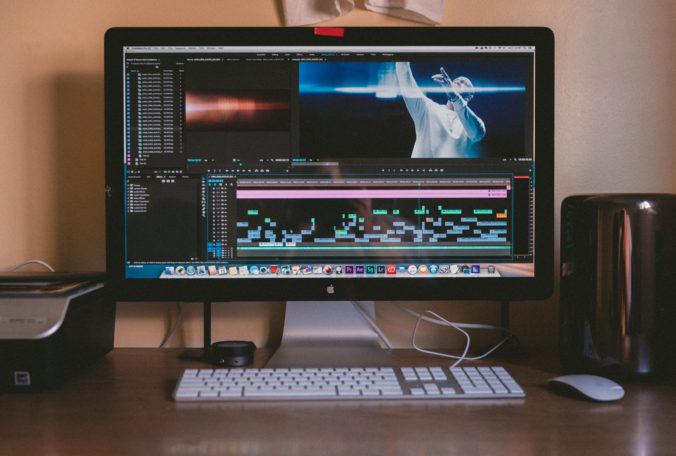I’ve always really enjoyed the video editing process. I’m not incredible at it but I do know the basics and that’s usually enough for the things that I do. It started in high school when I would film and edit my friend’s audition tapes for drama festivals and universities. I also took a lot of digital media and photography classes during my undergrad so I have a considerable amount of experience editing photos as well. In fact, the header photo for my last blog post is a compilation that I made on Photoshop using some photos from Unsplash. It’s something that I really enjoy doing but don’t really have the opportunity to practise. When I am given the opportunity I usually take it.
For the past couple of weeks, during my observation class, I have been going to the Film and TV class at Claremont which has been pretty enlightening. It seems that this is the first year that the class had been available in a while and from what I have observed, the teacher responsible for teaching the class doesn’t seem to have very much experience with the actual production side of things.
First of all, he is asking the students to use Imovie, despite the fact that the school pays for the Adobe suite, meaning that they have Premiere Pro available to them. Imovie is a serviceable program but there are a few things that become incredibly frustrating as you try and do more and more complicated things with it. This includes the difficulties with editing audio.
In my experience, it is usually a good idea to record audio separately as best you can because not only is the audio that your camera or phone picks up not the best quality, but unlinking audio and video can be an arduous process. Also, saving a backup file of just the audio becomes a lot more difficult. Since the Film and TV program at Claremont is only in its first year, there isn’t a lot of money being thrown at the program and I’m not sure they even have access to simple audio recorders. Still, they all have cell phones that they could record separate audio on.
It seems to me, even though I have only been observing for two days, that the students haven’t really been taught the basics of the programs that they are meant to be using and have largely been left to their own devices to figure it out. This includes recording film and audio. We were able to watch some of their finished projects during one of the classes and a lot of them had these audio issues where it was almost impossible to hear what they were saying. This seemed to be a result of either not having enough time to actually review their work (they were only given a two-hour block of time to finish filming and edit their two-minute videos. For reference, it took me around 6 hours to edit a five-minute video with a separate audio file and I at least have a little practise using the editing software.) or it was a result of them not getting sufficient instruction on how to avoid things like that and how to review their footage before they decide they’re done filming.
Ultimately, I’m really glad that there is a Film and TV class being taught in high school but it’s clear that the infrastructure isn’t quite there to make it a course that will be super useful in the long term. These students will really only be able to carry forward the skills that they have learned on their own and not anything that was actually taught to them.
I’ve decided to attach the video I made for my free inquiry project in my EDCI 780 class. I was curious about what different tools could be used to assess the arts since you can’t really assess them based on skill. It’s not perfect and I would have liked to spend a little more time on it but, in this learning economy, I just didn’t have the time.
I hope you enjoy it!

Recent Comments